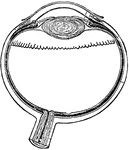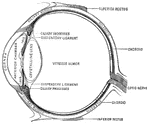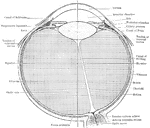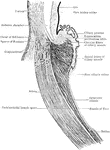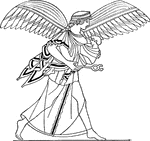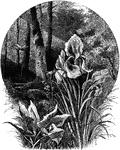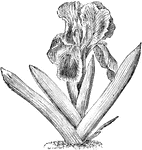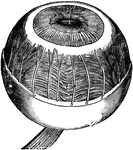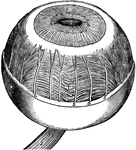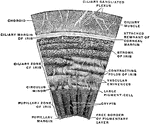Clipart tagged: ‘iris’

Eye
"Next in order is the aqueous humor, b, e, in the middle of which is the iris, d, c. Behind the pupil…
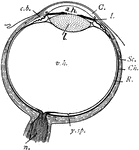
Eye
"Diagram of the eye. C., Cornea; a.h., aqueous humour; c.b., ciliary body; l., lens; I., iris; Sc.,…
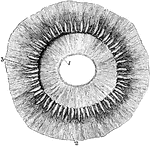
Ciliary Processes of the Eye as Seen from Behind
Ciliary processes, as seen from behind. Labels: 1, posterior surface of the iris, with the sphincter…
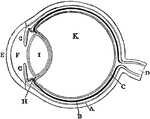
Diagram of the Eye
Plan of the eye seen in section. Labels: A, The Sclerotic Coat; B, The Choroid Coat; C, The Retina;…

Diagram of the Eye
"Diagram illustrating the Manner in which the Image of an Object is inverted on the Retina." — Blaisedell,…
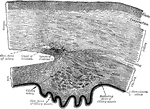
Section of the Eye
Section of the eye, showing the relations of the cornea, sclera, and iris, together with the Ciliary…
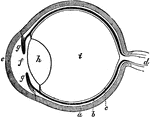
The Eye
The eye. Labels: a, sclerotica; e, cornea; b, choroid; d, optic nerve; f, aqueous humor; g g , iris;…
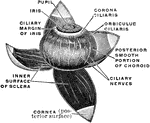
Vascular Coat of the Eye
The middle or vascular coat of the eyeball exposed from without. Left eye, seen obliquely from above…

Left Eyeball in Horizontal Section
The left eyeball in horizontal section from before back. Labels: 1, sclerotic; 2, junction of sclerotic…

Section of Left Eyeball
The left eyeball in horizontal section from before back. Labels: 1, sclerotic; 2, junction of sclerotic…

Surface Rhizomes of German Iris
The rhizomes of german iris are formed on top of the ground. The rhizomes should not be covered with…

Iris
"Iris puts on her robe of many colors, and tingeing the sky with her bow, seeks the palace of the King…
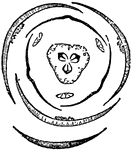
Iris
"Diagram of the trimerous symmetrical flower of Iris. There are three alternating divisions of each…
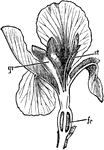
Iris
Iris is a genus of between 200-300 species of flowering plants with showy flowers. It takes its name…

Iris Caucasica
Each spathe of iris caucasica has one flower. The flowers are a pale yellow and have no scent. Each…
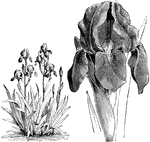
Habit and Detached Flower of Iris Germanica
Iris germanica is commonly know as either German or common iris. The flowers are purple with a white…
Iris Guldenstadtiana
Iris guldenstadtiana flowers bloom in June. Each spathe has two or three flowers. The plant grows two…
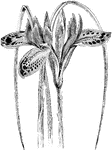
Flowers and Leaves of Iris Histrio
Iris histrio flowers are a lilac purple color. Each spathe has one flower.
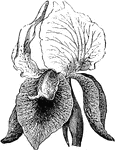
Flower of Iris Iberica
Iris iberica flowers grow alone on each stem. The flowers are white or pale lilac.

Iris Laevigata Flore-Pleno
The common name of iris laevigata is Japanese Iris. The flowers are bright purple and grow alone on…

Flower Scape of Iris Pallida
Iris pallida is a fragrant flower with a smell similar to orange blossoms. The lower half of the flower…
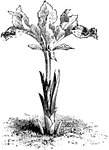
Iris Persica
Iris persica flowers are violet scented. The flowers bloom in February and March. The flowers are a…
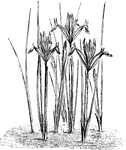
Iris Reticulata
The limb of iris reticulata is a deep, violet purple. The flower also has a narrow, paler keel that…

Iris Susiana
Iris susiana flowers grow alone of each stem. The flowers are a whitish lilac with dense, fine brown…
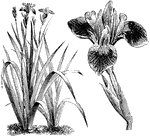
Habit and Detached Portion of Inflorescence of Iris Versicolor
Iris versicolor flowers are redish purple. The flowers grow in clusters. This variety is common in North…
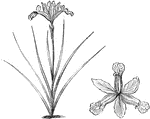
Habit and Detached Flower of Iris Vulgare
The stem of iris vulgare is one to two feet high with one or two flowers. The flowers are purple and…

Dehiscing Capsule of Iris
The capsule of iris bursts when ripe. When the capsule bursts it discharges its' contents.

Pupil Contraction and Dilation
On the left (a) the pupil is wide open (dilated), while on the right (b) the pupil is contracted. The…

